Interior Design and Decor: A Comprehensive Guide 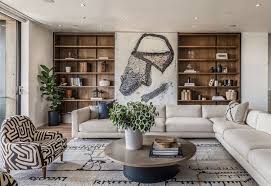
Interior design and decor play a pivotal role in shaping the atmosphere and functionality of our living spaces. From selecting color palettes and furniture arrangements to choosing decorative accessories, the choices we make can transform a house into a home. This guide delves into the principles of interior design, current trends, practical tips, and creative ideas to help you create beautiful and functional interiors.
- Understanding Interior Design
1.1 What is Interior Design?
Interior design is the art and science of enhancing the interior of a space to achieve a healthier and more aesthetically pleasing environment for the people using it. This process involves a combination of layout planning, color theory, furnishings selection, and decoration to create cohesive spaces that reflect personal style and meet functional needs.
1.2 The Difference Between Interior Design and Decor
While often used interchangeably, interior design and interior decor are distinct:
- Interior Design: Involves a holistic approach, addressing spatial layout, functionality, and structural elements. It often includes architectural aspects and may require knowledge of building codes and regulations.
- Interior Decor: Focuses on the aesthetics of a space. It encompasses the selection of colors, furnishings, and accessories without delving into structural changes.
- Key Principles of Interior Design
2.1 Balance
Balance refers to the distribution of visual weight in a space. It can be achieved through symmetrical (formal) or asymmetrical (informal) arrangements. Achieving balance ensures that no single element overpowers another, creating harmony in the design.
2.2 Focal Point
A focal point draws the eye and serves as the central element in a room. This can be a piece of art, a fireplace, or a statement piece of furniture. Creating a clear focal point enhances the room’s visual interest.
2.3 Scale and Proportion
Scale relates to the size of objects in relation to the room, while proportion refers to the relationship between the sizes of various elements. Maintaining appropriate scale and proportion ensures that spaces feel comfortable and inviting.
2.4 Harmony and Unity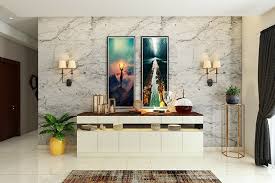
Harmony and unity are achieved when all elements of a space work together cohesively. This can be accomplished through color schemes, consistent styles, and coordinated furnishings that complement each other.
2.5 Contrast
Contrast adds visual interest and depth to a design. It can be achieved through color differences, varying textures, and juxtaposing styles, which help highlight particular features and create dynamic spaces.
- The Design Process
3.1 Define Your Style
Before diving into design, it’s crucial to define your style. Some popular interior design styles include:
- Modern: Characterized by clean lines, minimalism, and neutral colors.
- Traditional: Features classic details, rich colors, and ornate furnishings.
- Bohemian: Embraces eclectic elements, vibrant colors, and a mix of patterns.
- Industrial: Incorporates raw materials like metal and wood, often with a minimalist aesthetic.
- Scandinavian: Focuses on simplicity, functionality, and natural light, often featuring neutral palettes and organic materials.
3.2 Create a Mood Board
A mood board is a visual representation of your design ideas. It can include colors, textures, furniture styles, and inspirational images. This tool helps clarify your vision and serves as a reference throughout the design process.
3.3 Space Planning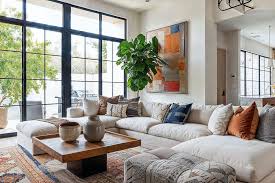
Effective space planning ensures that the layout meets your functional needs while optimizing the flow of movement. Consider the following:
- Traffic Flow: Ensure pathways are clear and that movement through the space is intuitive.
- Zoning: Define areas for specific activities, such as seating, dining, or working, to enhance functionality.
3.4 Selecting Colors
Color significantly impacts the mood and perception of a space. When selecting a color palette, consider:
- Color Psychology: Different colors evoke different emotions. For example, blues can create calm, while yellows can inspire energy.
- Flow Between Spaces: Maintain a cohesive color palette throughout connected areas to create a sense of unity.
3.5 Choosing Furnishings and Decor
Select furnishings and decor that align with your style and functional needs. Consider:
- Functionality: Choose pieces that serve a purpose while contributing to the overall aesthetic.
- Quality: Invest in quality furnishings that will withstand wear and tear and stand the test of time.
- Texture and Pattern: Incorporate a variety of textures and patterns to add depth and interest to the space.
- Current Trends in Interior Design
4.1 Sustainable Design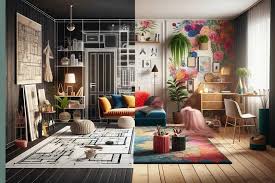
Sustainability is a growing trend in interior design. This involves using eco-friendly materials, energy-efficient appliances, and incorporating elements that reduce environmental impact. Popular choices include:
- Recycled Materials: Furniture and decor made from reclaimed wood or recycled metals.
- Natural Fibers: Rugs, curtains, and upholstery made from natural materials like cotton, linen, or jute.
4.2 Minimalism
Minimalism emphasizes simplicity and decluttering. The focus is on quality over quantity, with a preference for functional and aesthetically pleasing designs. Key characteristics include:
- Neutral Color Palettes: Whites, grays, and beiges create a serene environment.
- Functional Furniture: Multi-purpose furniture pieces maximize space while maintaining a clean look.
4.3 Maximalism
In contrast to minimalism, maximalism embraces bold colors, patterns, and an eclectic mix of styles. This trend celebrates individuality and creativity, allowing for personal expression in design. Features include:
- Layered Textures: Combining various materials and textiles for depth.
- Vibrant Color Combinations: Unconventional color pairings that create visual impact.
4.4 Biophilic Design
Biophilic design connects indoor spaces with nature, promoting well-being and tranquility. Key elements include:
- Natural Light: Maximizing daylight through large windows or skylights.
- Indoor Plants: Incorporating greenery to enhance air quality and aesthetics.
- Natural Materials: Using wood, stone, and other natural materials to create a calming environment.
- Practical Tips for Successful Interior Design
5.1 Lighting
Lighting is essential in interior design, affecting mood and functionality. Consider these aspects:
- Layered Lighting: Use a combination of ambient, task, and accent lighting to create a versatile and inviting atmosphere.
- Natural Light: Maximize daylight with window treatments that allow light to filter through while maintaining privacy.
5.2 Storage Solutions
Effective storage solutions keep spaces organized and clutter-free. Consider:
- Built-In Storage: Custom shelves and cabinets maximize space and provide a seamless look.
- Multi-Functional Furniture: Choose pieces like ottomans or coffee tables with hidden storage.
5.3 Personal Touches
Adding personal elements to your design helps create a space that feels uniquely yours. Incorporate:
- Artwork: Displaying art that resonates with you adds character and depth to your space.
- Sentimental Items: Integrating personal mementos or heirlooms creates a sense of history and connection.
5.4 Regular Updates
To keep your space feeling fresh, consider making small updates regularly:
- Seasonal Decor: Change throw pillows, artwork, or decor elements with the seasons to maintain a dynamic look.
- Paint Refresh: A new coat of paint can dramatically change the feel of a room without a complete overhaul.
- Room-Specific Design Considerations
6.1 Living Room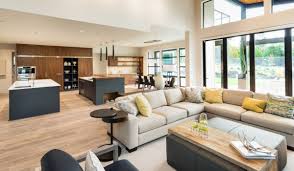
The living room is often the heart of the home. Focus on:
- Comfortable Seating: Choose sofas and chairs that invite relaxation while accommodating your lifestyle.
- Entertainment Integration: Consider the placement of televisions and sound systems for optimal viewing and listening experiences.
6.2 Kitchen
The kitchen should be both functional and stylish. Key considerations include:
- Work Triangle: Ensure an efficient layout between the sink, stove, and refrigerator.
- Storage Solutions: Incorporate cabinets and shelving to keep countertops clear and organized.
6.3 Bedroom
The bedroom should be a tranquil retreat. Focus on:
- Calming Color Palettes: Use soft colors that promote relaxation, such as blues, greens, or neutrals.
- Layered Textiles: Combine bedding, throws, and pillows for a cozy, inviting look.
6.4 Bathroom
Bathrooms should balance functionality with aesthetics. Key elements include:
- Quality Fixtures: Invest in high-quality faucets, showerheads, and cabinetry for durability and style.
- Spa-Like Features: Consider adding elements like a soaking tub or rainfall shower to create a relaxing atmosphere.
- DIY vs. Professional Help
7.1 When to DIY
If you’re handy and enjoy home projects, many aspects of interior design can be tackled independently:
- Painting: A fresh coat of paint can dramatically change a room’s appearance.
- Furniture Arrangement: Rearranging furniture can refresh the space without cost.
7.2 When to Hire Professionals
For more complex projects or if time is a constraint, hiring professionals can be beneficial:
- Interior Designers: They can provide expert guidance, especially for larger projects requiring spatial planning.
- Contractors: For structural changes or extensive renovations, hiring a licensed contractor ensures quality workmanship.
- Conclusion
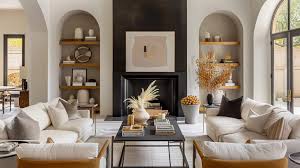
Interior design and decor offer endless opportunities for creativity and self-expression. By understanding the principles of design, current trends, and practical tips, you can create spaces that reflect your personal style while meeting your functional needs.
Whether you choose to tackle your design projects independently or seek professional assistance, the key is to approach the process with intention and clarity. Remember that your home is a canvas for your lifestyle, and every choice you make contributes to the overall atmosphere. Embrace the journey of transforming your space into a beautiful and functional haven that you and your loved ones will enjoy for years to come.

